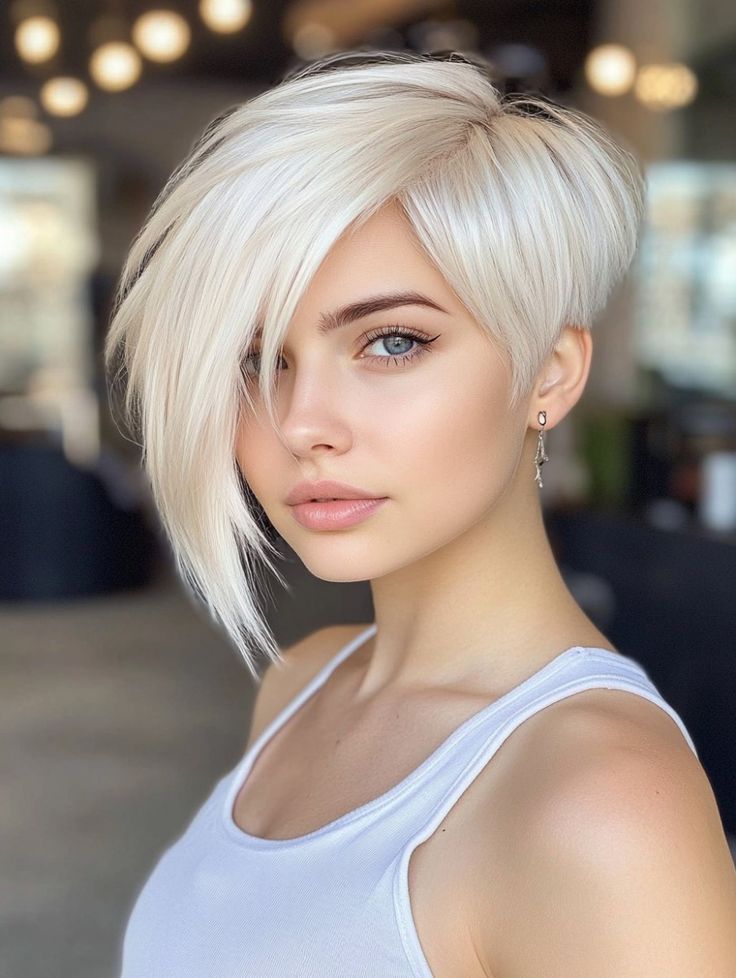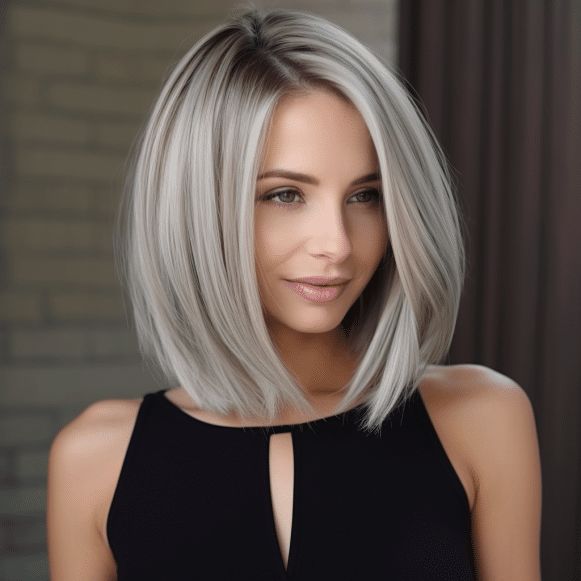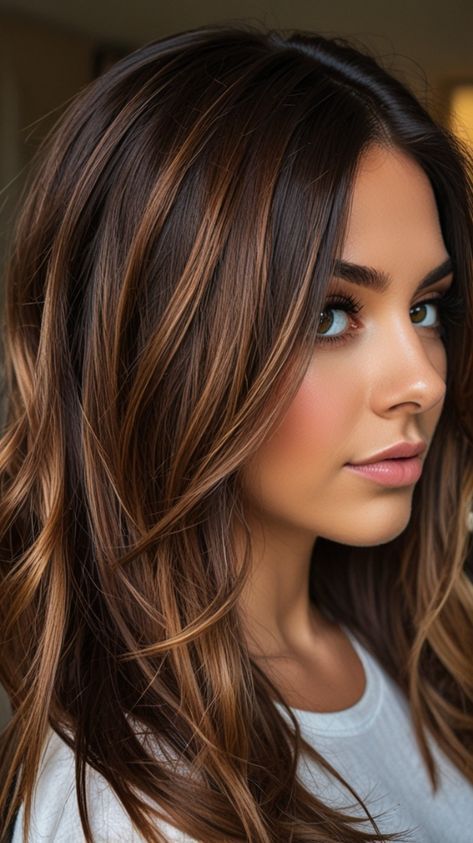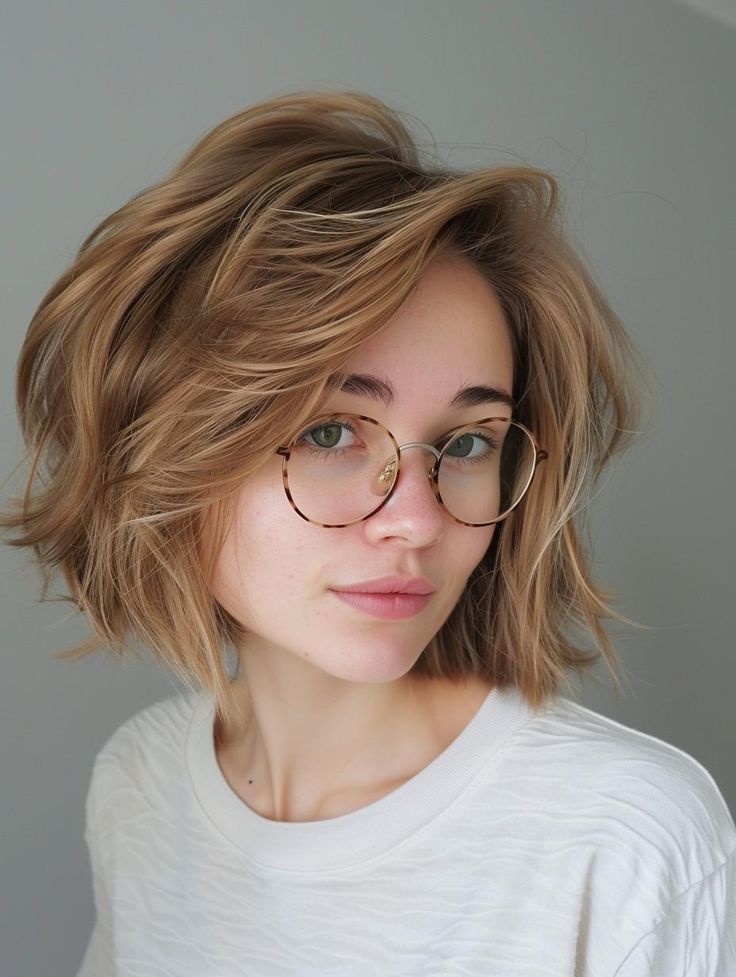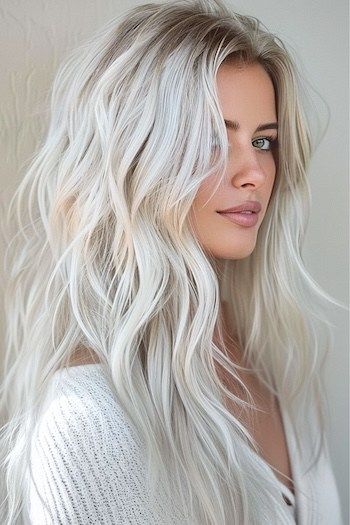15+ Gray Blending For Dark Hair Styles for 2025
In recent years, gray blending for dark hair has become a sought‑after technique for those wanting to embrace their natural grays or add dimension without going full silver or platinum. Rather than harsh lines or obvious regrowth, gray blending creates a soft, natural transition between dark hair and gray strands. Whether you’re starting to notice a few silver hairs or have a lot of gray already, this styling method can give you a polished, age‑defying look. In this article, you’ll learn what gray blending is, how to do it correctly, what styles suit it, and how to care for your blended color so it lasts and looks healthy.
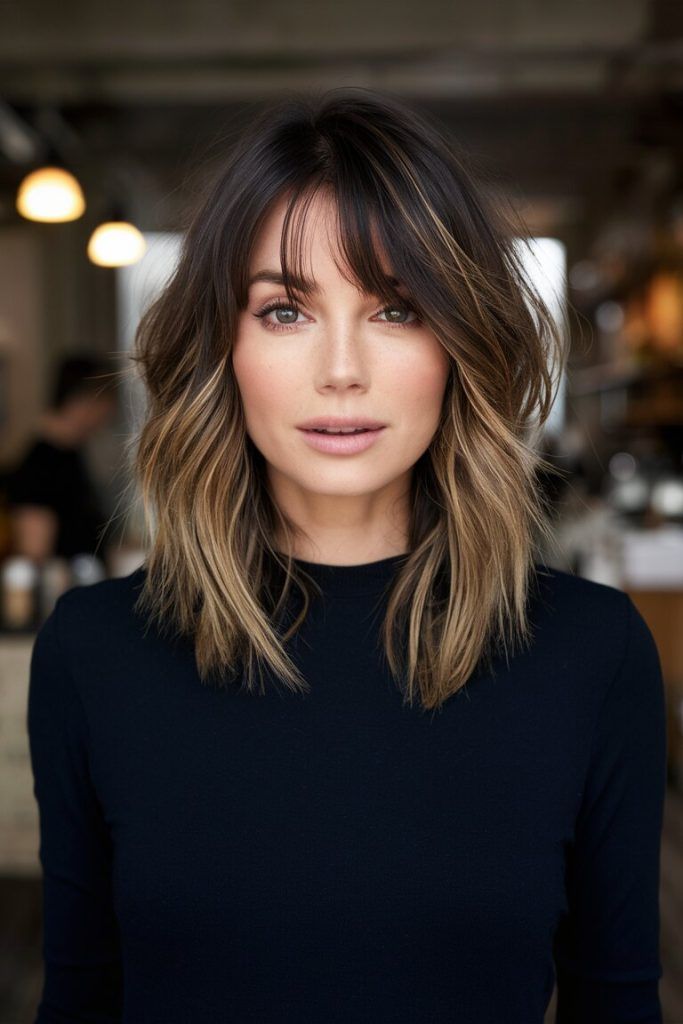
What Is Gray Blending For Dark Hair?
Gray blending for dark hair involves strategically incorporating gray, silver, or lighter strands into predominantly dark hair in such a way that the transition is subtle and flattering. This can be done via various techniques—lowlights, highlights, balayage, babylights, or customized foil placements. The goal is to reduce the stark contrast between new gray growth and darker roots, making regrowth less noticeable and giving a softer, lived‑in appearance.
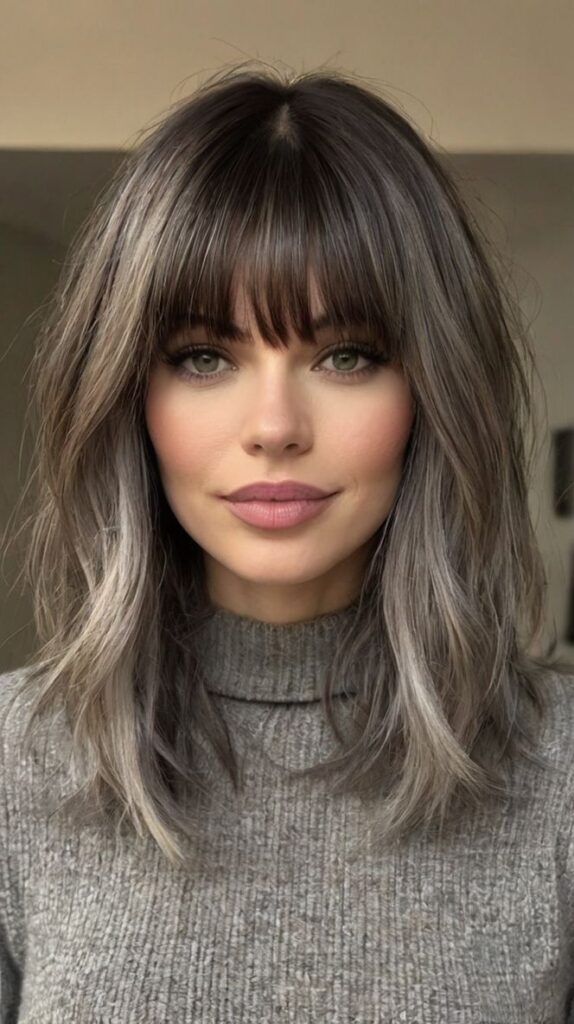
Why Choose Gray Blending For Dark Hair?
- Natural Transition: Instead of letting dark roots show a sharp line when grays grow out, blending allows a gradual change that looks intentional.
- Less Maintenance: When done well, gray blending for dark hair hides roots and minimizes frequent touch‑ups.
- Cool Tones & Dimensionality: Blending introduces silvery, cool tones that contrast with warm dark hair to create depth and visual interest.
- Confidence & Style: Many people feel empowered embracing grays; blending supports that while maintaining style.
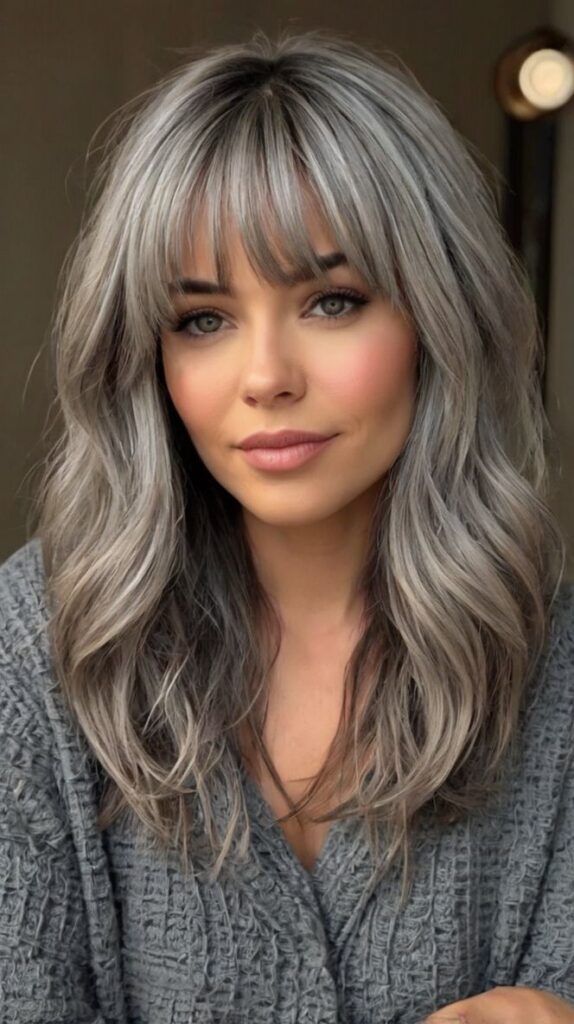
Techniques for Gray Blending For Dark Hair
- Balayage or Freehand Painting
Soft, painted highlights that begin mid‑shaft or lower allow grays to mix in gradually without harsh lines. - Foil or Weave Highlights
More controlled than balayage, this technique places lighter shades or silver tones in specific strands to accentuate gray blending for dark hair. - Babylights
Ultra‑fine highlights that mimic natural gray distribution. Great for subtle gray blending for dark hair. - Lowlights
If your dark hair has too much brightness or color change, lowlights (adding darker shades among grays) help balance texture and contrast. - Shadow Root or Root Smudge
Dark roots are dimmed or shaded so that the line of demarcation between natural roots and blended grays is softened.

Choosing Shades & Tone
- Cool vs Warm: Gray blending for dark hair usually leans cooler (ash, silver, platinum) but occasionally a slightly warm gray (with a touch of beige) can flatter certain skin tones.
- Depth Matching: For best results, the base dark color should harmonize with the gray tones. If too mismatched, the blending may look patchy or unnatural.
- Undertones Consideration: Skin undertones (cool, warm, neutral) play a big role. Cool skin tones often wear silvery grays well; warm skin tones may benefit from smoky or greige tones.

How to Do Gray Blending For Dark Hair (Step‑by‑Step)
- Consultation: Discuss with a stylist what level of maintenance you’re comfortable with, and examine your skin tone.
- Strand Test: Always test a small section first, especially if lightening is involved, to avoid unpleasant surprises.
- Pre‑Lightening: Dark hair may need bleaching or lighteners to lift it sufficiently so the gray or silver tone can show.
- Toning: After lifting, apply toner to neutralize brassiness and get the precise gray tone you want.
- Application Technique: Use balayage, foils, etc., to place lighter strands strategically among your dark base.
- Blending the Roots: Shadow root, root smudge, or simply letting natural grays grow and blending around them helps reduce maintenance.
- Aftercare: Use purple or silver shampoos/conditioners, heat protectants, and hydrating masks to keep the hair healthy and the gray cool and clean.

Styles & Cut Ideas
- Face‑Framing Grays: Lightened pieces around the face enhance brightness and frame features.
- Layered Cuts: Layers help blend shades naturally and avoid harsh boundaries.
- Bob or Lob: Shorter styles show off gray tones with movement.
- Long Hair with Soft Waves: Waves help mix gray and dark hair visually in an organic way.

Maintenance & Care
- Purple / Silver Shampoo & Conditioner: Use weekly to counter brass and maintain the cool gray tones.
- Deep Conditioning: Gray blending for dark hair often involves lightening; moisture is essential to repair damage.
- Reduce Heat Styling: Heat can cause fading. Use protectants and lower temps.
- Regular Toner Touch‑Ups: Depending on how quickly your hair grows and how porous it is, you may need toner every 6‑12 weeks.
- UV Protection: Sun exposure can yellow gray tones; hats or UV sprays help.

Conclusion
Embracing gray blending for dark hair offers a flattering, modern, and flexible way to mix natural grays or intentionally added silvers into your dark base. With the proper technique, shade selection, and care, you can achieve a look that’s low maintenance, stylish, and confident. Whether you go for subtle babylights, bold balayage, or something in between, blending gray into dark hair positions you to enjoy your natural beauty—on your terms.
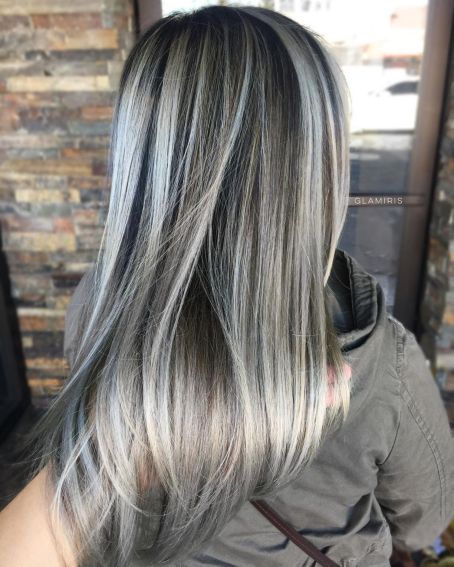
FAQs
1. Will gray blending damage my dark hair?
It can, especially if your hair is processed or fragile already. Lightening stages needed for gray blending can cause dryness or breakage if not done carefully. Always use professional‑grade bleach, deep conditioners, and treatment masks.
2. Can I do gray blending at home?
Yes — for subtle effects (babylights, mini balayage), at‑home kits and good tutorials may work. But for dramatic color changes or precise tone, seeing a stylist is usually safer and more reliable.
3. How often will I need touch‑ups?
This depends on how fast your hair grows, how stark the contrast is, and how well you maintain tones. Typically, root blending or toner sessions every 6‑12 weeks, with purple shampoo weekly.
4. Is gray blending suitable for all skin tones?
Yes, with the right tone choices. Cooler grays suit cool or neutral skin; warmer or smoky grays can flatter warm tones. Always test small sections or try semi‑permanent tones first.
5. Does the process require bleach?
Often yes. To get light gray or silver tones, dark hair usually needs to be lightened. However, for blending natural gray hairs (rather than adding lighter dye), you can sometimes work around bleaching less, especially if you stick to lowlights or root blending.
6. How do I prevent yellow or brassy undertones?
Use toners and purple/silver shampoos. Also avoid sun exposure and chlorine (from pools) when possible. Professional salon toners are best for long‑lasting cool tones.
7. What’s the cost range for gray blending at a salon?
Costs vary widely depending on region, skill of the stylist, amount of lightening, and maintenance involved. Simple blends may be modest; full balayage or foil techniques are more expensive.

